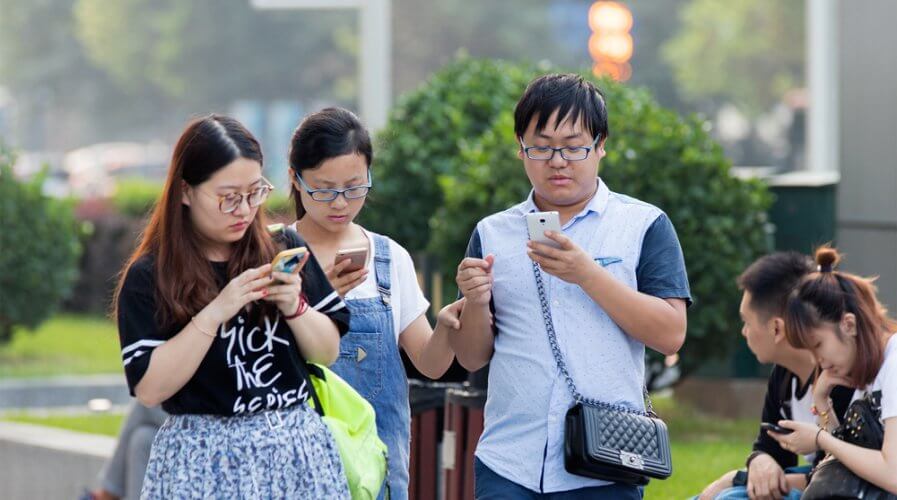
Mobile is now a platform for innovation. Source: Shutterstock
Why Forrester believes brands need to re-imagine mobile
MOBILE devices, or smartphones to be more specific, are incredibly popular and useful in today’s day and age.
As devices have become cheaper and connectivity has become more scalable, smartphones have become part and parcel of everyday life.
In many parts of the world, people tend to spend more time on the device than they do on their daily commute and breaks combined.
As a result, brands, especially in the e-commerce and travel space have made several changes to their business to respond to the change and provide better support and experiences on mobile devices.
However — that might not be enough for the next generation. Tomorrow’s success stories need more than mobile-first experiences, they need to use the mobile device as a platform for innovation — in conjunction with technologies such as 5G, augmented reality, and IoT.
According to Forrester Principal Thomas Husson’s new report Reimagine Mobile To Activate The Total Brand Experience, the incredible popularity of mobile is why brands must think beyond mobile-first.
“I think a mobile-first focus on screen size, instead of the possibilities of personal interactions, prevents CMOs from thinking holistically about mobile as a core component of their engagement strategy,” said Thomas.
“The sad reality is that most brands are still not mature at integrating and implementing mobile into their marketing strategy.”
According to the Forrester Principal Analyst serving CMOs, mobile will integrate the personal and the branded. He advises marketers to look out for the following changes in the next three to five years:
# 1 | Mobile usage matures to mobility-always:
“Despite saturation in mature economies, Forrester expects the number of global smartphone subscribers to reach 3.9 billion by 2023, with the Asia Pacific accounting for 73% of new subscribers in the next five years.”
Husson and his team don’t just see mobile users doing more with the device but expect digital services such as e-wallets, video, and healthcare picking up steam as a result of mobile penetration and use.
This is especially true in the APAC where healthtech companies such as Ping An and DocTalk, fintech companies such as Alipay and WeChat Pay, and video players like iFlix are already leading the way.
# 2 | Mobile is the glue that connects new technologies at scale:
“Mobile is like electricity in the second industrial revolution: It will enable and unleash a new wave of innovation, especially for AI, voice, visual search, or augmented reality.”
Tomorrow’s smartest services won’t just be using cutting-edge technology but will use mobile as the platform to do it.
Take the Google Lens, for example. It captures images using the smartphone’s camera and runs an AI algorithm to understand what the image is — this technology is also used by e-commerce shopping app Lazada to find similar products from its massive online store.
# 3 | Mobile is less remote-control and more real-time:
“With voice and sensors exploding into the world around us, the role of mobile will evolve. Mobile will thus slowly act less like a remote control to initiate our experiences.”
Forrester’s team also believes that the rise of 5G will instantly connect with the world around us and share real-time physical and virtual experiences.
While this something consumers really experience today, it is something corporate environments are exploring quite actively.
Take mobile-based physical access in office buildings for example. The device is assigned a unique identifier which serves as a beacon to locate employees, grant access as they move from one area to another, and helps pay for food and avail of services at the canteen and print stations. All in real-time.
# 4 | Mobile remains the most friction-free interface:
“Despite rapid technology evolution, no new device will overtake the massive scale and popularity of mobile phones in the next 10 years.”
Mobile devices usually run either Android or iOS. They usually have a display size within a fixed range. Further, experience gained so far makes it easy to create apps and understand what customers/users want.
As we move to more cutting-edge technologies such as AR and virtual reality, the mobile device will play an important role to ensure developers can focus on the product rather than the medium delivering the final product.
READ MORE
- Strategies for Democratizing GenAI
- The criticality of endpoint management in cybersecurity and operations
- Ethical AI: The renewed importance of safeguarding data and customer privacy in Generative AI applications
- How Japan balances AI-driven opportunities with cybersecurity needs
- Deploying SASE: Benchmarking your approach






